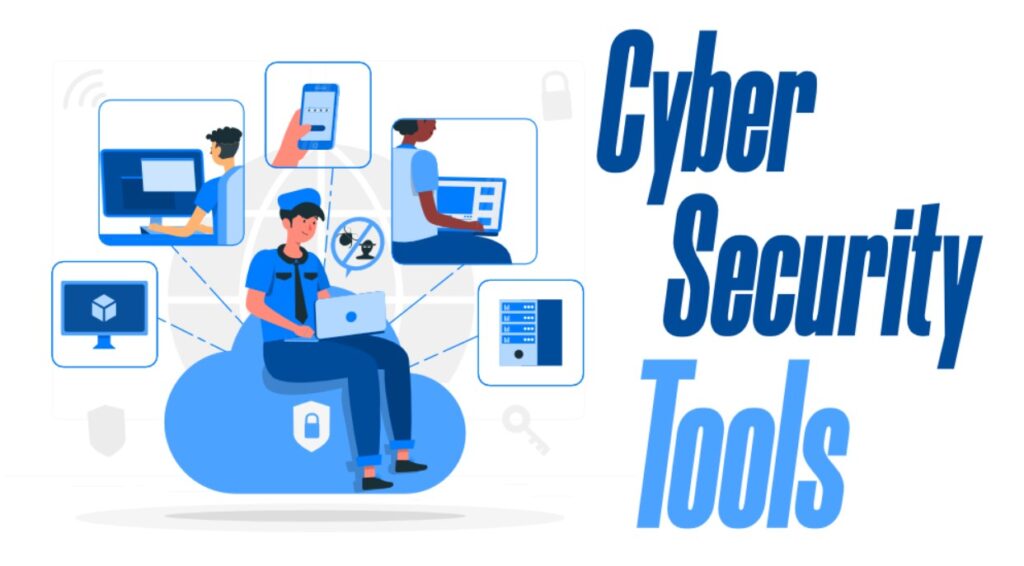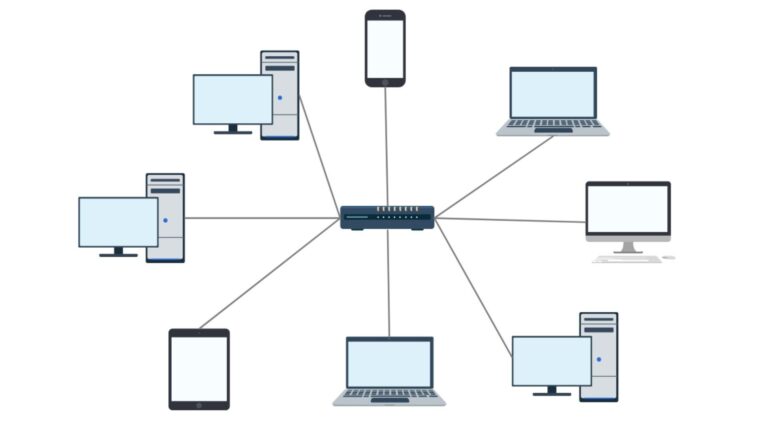Cyber Security: Safeguarding Your Digital World
In today’s world, where most of our daily interactions take place online, cyber security has become a crucial aspect that can never be overlooked.
With the advent of new technologies, the risks and threats associated with online activities have also increased, making it more important than ever to ensure that our digital safety is well protected.
From identity theft to cyber attacks, there are numerous ways in which our online presence can be compromised, and being aware of these threats is the first step towards safeguarding ourselves and our digital assets.
Understanding Cyber Security
Cyber security is a set of measures, tools, and procedures that aim to safeguard computer networks, systems, and sensitive data against threats such as hacking, malware, and cyber-attacks.
It’s a crucial line of defense that ensures the integrity, confidentiality, and availability of our digital infrastructure, preventing unauthorized access, data breaches, and other security incidents.
In essence, cyber security is a shield that protects us from the ever-evolving threats of the digital world.
Types of Cyber Threats
Malware
Malware is a term used to refer to various types of software that are designed with the intent to exploit, harm, or compromise computer systems, networks, and data.
These can include viruses, worms, Trojans, ransomware, and spyware. Each type of malware has its way of infiltrating a system and carrying out its malicious activities, which can range from stealing sensitive data to disrupting the normal functioning of a computer or network.
It is important to take measures to protect your devices and systems from malware attacks to avoid potential damage and loss of valuable information.
Phishing Attacks
Phishing attacks are cunning and fraudulent attempts made by cyber criminals to deceive individuals into divulging their confidential information, such as login credentials, credit card numbers, or personal details.
These attackers often disguise themselves as trustworthy sources, such as official emails or websites, to gain the victim’s confidence and trick them into revealing their sensitive data.
DDoS Attacks
A Distributed Denial of Service (DDoS) attack is a type of cyber attack where a malicious actor floods a particular system or network with a massive amount of traffic, which ultimately overloads the system, causing it to become unavailable to legitimate users.
These attacks are highly disruptive and can cause severe damage to organizations in terms of reputation, financial losses, and disruption of services.
It is crucial to take necessary measures to protect against such attacks to ensure the smooth functioning of the systems and networks.
Bus Topology: Exploring the Backbone of Network Connectivity
Importance of Cyber Security Measures
Protection of Sensitive Data
Cybersecurity measures are put in place to ensure the protection of sensitive information, such as personal data, financial records, and proprietary business information.
These measures aim to prevent unauthorized access, theft, or misuse of such critical data, which could potentially result in significant financial losses, reputational damage, and legal consequences.
By implementing robust cybersecurity measures, individuals and organizations can mitigate the risks associated with cyber threats and protect their valuable assets.
Safeguarding Intellectual Property
Businesses rely on their intellectual property, such as trade secrets, patents, and proprietary algorithms, to gain a competitive edge in the market.
However, given the increasing frequency and sophistication of cyber threats and industrial espionage, it is crucial to take measures to protect these valuable assets.
Effective strategies include implementing robust cybersecurity measures, monitoring network activity for suspicious behavior, and limiting access to sensitive data to authorized personnel only.
Preserving Business Continuity
Cyber security measures play a significant role in maintaining business continuity by preventing cyber-attacks and minimizing downtime.
By implementing robust cyber security protocols, businesses can ensure that their operations run smoothly and efficiently, without any disruption caused by cyber threats.
This helps in safeguarding the organization’s critical assets and maintaining the trust of its customers and stakeholders.
Mesh Topology: The Complexities of Interconnected Networks
Cyber Security Frameworks and Standards
NIST Cybersecurity Framework
The National Institute of Standards and Technology (NIST) has developed a comprehensive framework to help organizations enhance their cyber security posture.
This framework is designed to provide guidelines, standards, and best practices to improve security measures. It consists of five core functions, which are Identify, Protect, Detect, Respond, and Recover.
These functions work together to create a strong defense against cyber threats, helping organizations to secure their systems, data, and networks.
ISO/IEC 27001
Did you know that ISO/IEC 27001 is a globally recognized standard for managing information security systems?
This standard provides guidelines for organizations to establish, implement, maintain, and enhance their security systems to safeguard the confidentiality, integrity, and availability of their information.
By complying with this standard, organizations can ensure that their information remains secure and protected against potential threats.
Best Practices for Cyber Security
Implementing Strong Password Policies
To enhance the security of your accounts and systems, it is recommended to enforce password complexity requirements and implement multi-factor authentication (MFA).
This helps to reduce the risk of unauthorized access and ensures that only authorized individuals can access sensitive information.
By incorporating these security measures, you can safeguard your data and prevent potential security breaches.
Keeping Software Up to Date
It is crucial to regularly update your software and systems with security patches and fixes to mitigate vulnerabilities and safeguard against known exploits.
This practice ensures that your systems remain protected and up-to-date with the latest security measures.
By keeping your software up-to-date, you can enhance the security of your data and devices against potential threats.
Employee Training and Awareness
It is of utmost importance to provide comprehensive education to your employees regarding the potential cyber security risks, the best practices to follow, and how to identify and report potential threats.
This will help in creating a robust human firewall that can protect your organization against cyber attacks.
By equipping your employees with the necessary knowledge and skills, you can significantly reduce the likelihood of a security breach and safeguard your company’s sensitive information.
Cyber Security Tools and Technologies

Antivirus Software
Antivirus software is a crucial tool that helps in safeguarding a computer system or network from harmful viruses and malware.
It is designed to detect, prevent, and remove malicious software from the system and network, providing real-time protection against malware threats.
The software uses a variety of techniques, such as signature-based detection, behavior-based detection, and heuristics, to identify and isolate the malware.
By using antivirus software, users can ensure that their devices and networks are safe from potential cyber threats.
Firewalls
A firewall is a security system that creates a protective barrier between a trusted internal network and untrusted external networks.
It does so by monitoring and controlling incoming and outgoing network traffic based on predetermined security rules.
The purpose of a firewall is to prevent unauthorized access to a network and ensure that only legitimate access requests are allowed through.
By doing so, it helps to keep the network safe and secure from potential cyber threats.
Intrusion Detection and Prevention Systems (IDPS)
In the realm of cybersecurity, Intrusion Detection and Prevention Systems (IDPSs) play a crucial role in safeguarding computer networks and systems against malicious attacks.
IDPSs can continuously monitor all activities on a network and system to detect any signs of suspicious behavior or policy violations.
In the event of any such occurrence, IDPSs swiftly alert administrators to take necessary actions to eliminate the threat.
They can also automatically block or mitigate the threats before they can cause any damage to the network or system.
Overall, IDPSs are a valuable tool in the fight against cybercrime and are essential for maintaining the security and integrity of computer networks and systems.
Emerging Trends in Cyber Security
Artificial Intelligence and Machine Learning
With the rapid advancements in technology, AI and machine learning have become crucial tools in the field of cyber security.
These technologies are used to predict potential threats, automate the detection and response to threats, and implement adaptive security measures.
As a result, AI-powered cyber security systems are becoming more advanced and effective in providing robust protection against cyber attacks.
Zero Trust Security Model
The Zero Trust security model is designed to protect against threats that can originate from both inside and outside the network.
This model requires a strict identity verification and continuous authentication process for all users and devices, regardless of their location or network environment.
By implementing this security approach, organizations can significantly reduce the risk of security breaches and improve their overall security posture.
Challenges in Cyber Security
Evolving Threat Landscape
Cyber threats are constantly evolving in sophistication and complexity, making it challenging for organizations to keep pace with new attack vectors and techniques.
Shortage of Skilled Cyber Security Professionals
The field of cybersecurity has been witnessing a rapid increase in demand for professionals who are well-equipped to develop, execute, and oversee efficient security measures.
However, this demand has resulted in a scarcity of qualified individuals who can fulfill these positions.
Regulatory Compliance and Cyber Security
GDPR (General Data Protection Regulation)
The General Data Protection Regulation (GDPR) is a regulation enacted by the European Union that mandates data protection and privacy for all individuals within the EU and the European Economic Area (EEA).
The GDPR imposes strict requirements on organizations that process personal data, such as obtaining consent, providing data access, and ensuring data accuracy, among others.
Non-compliance with the GDPR may result in significant penalties, including fines and legal actions, so organizations need to comply with this regulation to protect the privacy of individuals and avoid any legal consequences.
HIPAA (Health Insurance Portability and Accountability Act)
HIPAA is a crucial legislation in the United States that regulates the confidentiality and safety of protected health information (PHI) and establishes guidelines for the electronic transmission of healthcare data.
Healthcare organizations and their business associates must comply with the HIPAA regulations.
These standards ensure that sensitive healthcare information is protected and secure, which is critical in maintaining patient trust and confidence in the healthcare system.
Cyber Security for Small Businesses
Importance of Cyber Security for Small Businesses
It is a well-known fact that small businesses are more vulnerable to cyber attacks as compared to their larger counterparts.
Cybercriminals often target small businesses due to their perceived lack of robust security measures.
To prevent such attacks, small business owners must understand the importance of cyber security.
Implementing proper security measures can help protect sensitive data and ensure the smooth functioning of business operations.
Budget-Friendly Cyber Security Measures
For small businesses that are looking to maintain a robust cyber security system without breaking the bank, there are a couple of options available.
One such option is to utilize the free and open-source cybersecurity tools and services that are available.
Another option is to outsource cyber security functions to managed security service providers (MSSPs) who can provide cost-effective security measures tailored to their budget.
Both of these approaches can help small businesses to implement effective security measures without incurring huge expenses.
Cyber Security for Individuals
Personal Cyber Security Best Practices
Individuals must take proactive steps to safeguard their online presence and protect their sensitive information from cyber threats.
By securing their devices with strong passwords, regularly updating their software, and practicing safe internet browsing habits, individuals can significantly reduce the risks associated with online activities.
These measures not only ensure data security but also promote safe online practices, which are essential in today’s digital age.
Protecting Personal Information Online
Individuals must take all necessary precautions to safeguard their sensitive data from online threats.
One of the most effective ways to do so is by maintaining privacy settings on social media platforms and avoiding oversharing of personal information.
Additionally, it is essential to be cautious of phishing attempts, which can trick individuals into giving away their confidential information.
By following these best practices, one can significantly reduce the risk of falling victim to online threats and protect their privacy and security.
The Future of Cyber Security
Advancements in Threat Detection and Response
In the ever-changing landscape of cyber threats, it is crucial to enhance cyber security posture by leveraging advanced tools like behavioral analytics, threat intelligence sharing platforms, and automated security response mechanisms.
These tools can help organizations stay ahead of the curve and proactively mitigate potential cyber threats.
By monitoring user behavior and analyzing network traffic, behavioral analytics can detect anomalies and identify suspicious activities.
Threat intelligence sharing platforms allow organizations to share threat-related information in real-time, enabling them to make better-informed decisions.
Automated security response mechanisms can swiftly respond to potential threats, minimizing the damage and reducing the response time.
Therefore, organizations must invest in these advanced tools to stay ahead of the constantly evolving cyber threats.
Integration of Cyber Security into Everyday Technologies
As our reliance on technology grows, the need for cyber security becomes more crucial.
This is particularly true for everyday technologies such as Internet of Things (IoT) devices and connected homes, which are vulnerable to emerging threats that require robust security measures to protect against.
Therefore, the integration of cyber security into these technologies is paramount to safeguard our digital footprint and ensure that we stay safe online.
Conclusion
Protecting our digital world from cyber threats is an ongoing and complex process that requires constant attention and proactive measures.
Cyber security is a multifaceted discipline that involves understanding various types of cyber threats and implementing best practices to safeguard our online assets.
By staying informed about emerging trends and adopting a proactive approach, individuals and organizations can reduce the risks and protect themselves against cyber attacks.
Ultimately, a strong cyber security posture is critical to ensuring the safety and privacy of our digital lives.




